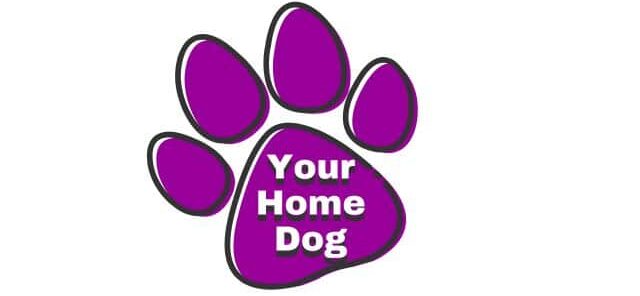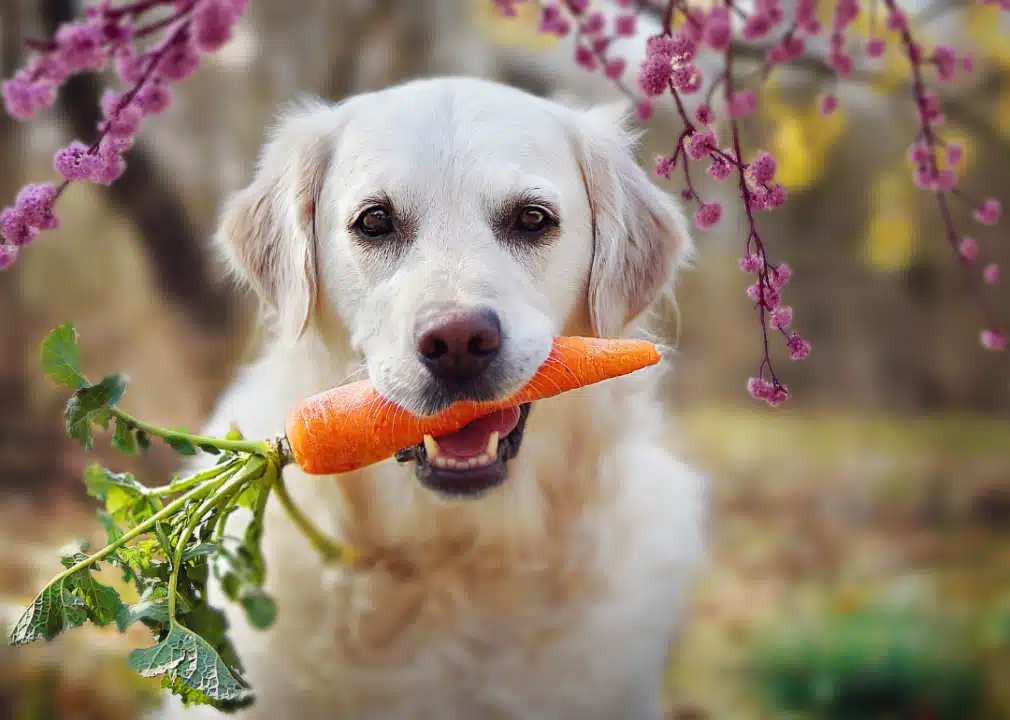Did you know that the superfoods for dogs are similar (if not the same) as the superfoods you may serve yourself? And, if staying healthy and fit is just as important for your dogs as it is for you, then read on for new and different ways to feed your pups.
Superfoods for dogs from your very own kitchen
Using research from various studies and internet resources, Native Pet compiled a list of superfoods found in most kitchens that can double as healthy snacks for dogs and their people.
But not all foods are the same—sometimes dogs need a little extra something to keep their diet healthy. “Superfoods” are foods that are nutrient-rich.
They have gained popularity in the 21st century, with the global market projected to reach about $215 billion by 2027, according to Mordor Intelligence, a market research firm.
There is no scientific definition of a superfood. However, most experts agree that they promote health or help to prevent disease because of high levels of antioxidants, fiber, or other nutritional benefits. That’s according to Cleveland Clinic.
These foods can supplement a nutrient-deficient diet or serve as a delightful treat. However, even with nutritious “superfoods,” moderation is essential.
In fact, keep the 10 percent rule in mind. That rule states that treats should account for no more than 10 percent of your dog’s daily calories. It is also a good rule of thumb to follow with superfoods for dogs–especially if they are new to their diet. Too much of a new (even good) thing can lead to an upset tummy.
Read on for superfoods from your own kitchen that dogs can enjoy.
Blueberries
These delightfully juicy berries are rich in minerals and vitamins, low in calories, and high in fiber. They also have one of the highest levels of antioxidants among most of the commonly consumed fruits in the U.S.
Blueberries are great treats. However, like all treats, feed them to your dog in moderation.
The amount you give to your dog depends on the dog’s size. For small dogs, 10 blueberries is an appropriate amount. Larger dogs can have more. However, always keep that 10 percent rule in mind.
Avoid a choking hazard
Because blueberries are so small, a big dog can easily eat too many of them. They often tend to swallow food without chewing. This can result in stomach pain or create a choking hazard.
In fact, little dogs can choke on berries, especially if they gulp them down or you give them in a frozen state. Hand-feeding can slow them down and help prevent choking.
Bone broth
Humans enjoy bone broth, and it’s also gaining popularity in the dog world. This nutrient-dense broth is a great source of collagen, a protein found in the connective tissues of animal bones that aids in regenerating skin, hair, joints, and leaky gut. It is also rich in vitamins, minerals, glycine, and glucosamine.
A healthy serving of bone broth is 1 ounce of broth for every 10 pounds of a dog’s body weight. For example, a single serving size for a 100-pound dog is 10 ounces, and your pet can have as many as two portions daily. Dog owners can serve it as an afternoon snack or pour it over the dog’s meal.
Important safety tip: you always want to choose bone broth over regular chicken or beef broth. Why? Because those other kinds of broth can contain garlic or onion–both foods that are dangerous for dogs to eat.
Carrots
Carrots are low-fat and low-calorie treats rich in vitamin A, potassium, and fiber, among other vitamins. Like other vegetables and fruits, they contain natural sugar, and too much sugar can result in obesity and dental decay. They also contain high levels of fiber, which, if introduced too quickly, can cause an upset stomach.
It’s advisable for dog owners to introduce this treat slowly and provide enough drinking water. Carrots, like other treats, should make up less than 10% of your pup’s daily calorie intake. An average-sized dog can safely consume two or three baby carrots per day.
Always clean and peel carrots. This helps to remove any dirt or pesticides. Also, chop them into bite-sized pieces to reduce any choking risk.
Cucumbers
Cucumbers contain vitamins A and K, potassium, and magnesium. These are all essential components of a healthy canine diet. Cucumbers can help eliminate dogs’ bad breath and keep their bones, kidneys, and liver strong and healthy.
They are also low-calorie vegetables made up of 95% water. One cup of chopped cucumbers contains around 16 calories, making cucumbers a great option for dogs that need to lose weight.
While feeding your dog cucumber is perfectly safe, it’s best to stick with the 10% rule to avoid an upset digestive system. This crunchy vegetable is a tasty and hydrating summer treat after a vigorous walk.
Eggs
Eggs are one of the most nutrient-dense foods available. They are packed with amino acids, fatty acids and vitamins. Eggs are an excellent source of nutrients for dogs—though, the source of the egg does make a difference.
You’ll want to choose eggs from free-range or pastured chickens. These are healthier and tend to be richer in vitamins and minerals. Sometimes, we’ll give our dogs scrambled eggs for breakfast in lieu of their regular food.
Eggs are easy to digest, which is helpful for dogs with sensitive stomachs. Plus, eggs can help keep dogs’ coats shiny and sleek.
How many eggs to feed a dog
Large dogs can have one whole egg daily. On the other hand, only feed smaller dogs one small egg per week and no more than one-quarter of an egg each day.
There are some restrictions on eating eggs for dogs with pre-existing health conditions like acute pancreatitis or diabetes. If you want to add eggs to your dog’s diet, it’s best to run it by your veterinarian first.
Cooked Fish
Fish can be a nutritious addition to a dog’s diet, but only certain types of fish are healthy for dogs to eat. Fish can be an excellent source of protein that is easily digestible for dogs, particularly those prone to upset stomachs. It is also an excellent alternative for dogs with allergies or intolerances to common pet food ingredients such as chicken.
Because it is relatively low in saturated fats, it’s a great option for dogs on a weight loss diet and is also rich in omega-3 fatty acids, which reduce inflammation and keep the skin and coat healthy. Fish contain vitamins and minerals that strengthen dogs’ immune systems and can contribute to joint health. But be warned: Fish must be cooked without any additional oil or seasoning.
Green beans
Green beans are not only safe for dogs to eat, vets recommend them as a nutritious snack as well. They are full of essential vitamins and minerals like protein, iron, calcium, and vitamins B6, A, C, and K.
Green beans are the perfect snack for keeping a dog in shape; they are full of fiber and low in calories. It’s probably what led to the so-called “green bean diet.”
Pumpkin
Pumpkin is high in fiber and vital micronutrients, making it an exceptionally healthy snack. Also, pumpkin contains vitamins A, C, and E, as well as minerals like iron and potassium.
What’s more, pumpkin seeds contain the amino acid cucurbitin, which paralyzes and eliminates parasites in your dog’s digestive tract. Plus, pumpkin is a natural stomach soother and helps remove excess water in the digestive tract.
Adding pumpkin is also a healthy way to bulk out a dog’s diet without adding many calories. Adding between 1-4 tablespoons of pumpkin per meal to a large dog’s diet is adequate to avoid adding too much fiber while meeting the dog’s nutritional needs. For smaller dogs, the max amount should be 1/2 teaspoon daily.
James Ola Adisa contributed to this story, which originally appeared on Native Pet and was produced and distributed in partnership with Stacker Studio.

